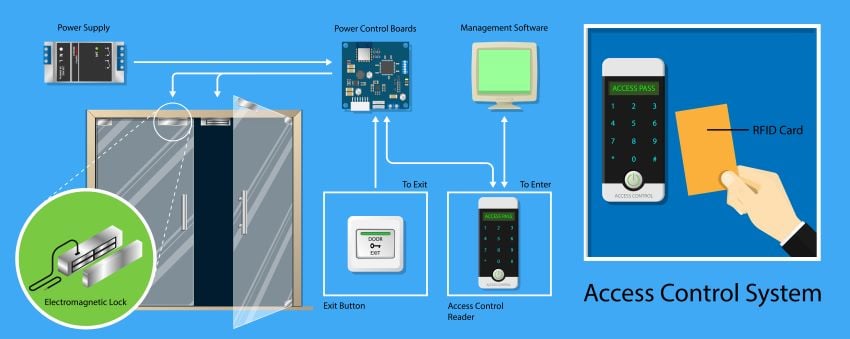
Every occupation, profession, and industry has its own jargon. These technical terms help professionals communicate with each other and do their jobs more efficiently. When experts in these fields use jargon it can be unclear, particularly for those not in their industry. Security and access control systems have their own unique terminology. These terms, like tailgating, Mantrap, and so on, refer to important things. Even though you are not a security specialist, it is good to understand these terms, especially if you use an access control system either in your home or at work. By understanding these unique yet essential terms of an access control system, you will better understand your access systems and even your entire security architecture. Therefore, in this article, we will explain some important access control terms that you should know.
Tailgating
You might want to prevent your younger child from accessing certain content on your TV or device by refusing to tell them the password. When you leave the house, they can tell someone older who knows the password to help them access this content. The person innocently does it without knowing the instructions you've passed. Tailgating is somewhat like that. It is a breach in which an unauthorized individual follows an authorized person into a confidential area. Like Children, criminals target helpful employees or kind students to gain information about an organization or institution. While this help might seem harmless, it can cause a massive data breach, financial loss, or ruin the reputation of this organization.
Mantrap
Mantrap is usually used in organizations like banks and airports that require high-level security to prevent theft or suicide bombing. Mantrap is a physical-mechanical device used to prevent an unauthorized person from accessing a particular area or place in an organization. It consists of an interlocking system, which means the second door cannot open until the first one is locked. As a result, individuals are briefly trapped in the vestibule before clearing the second door. The vestibule can be controlled either manually or automatically.
Delayed Egress
Delayed egress is a locking feature that delays opening a door for a particular amount of time, mostly 15 seconds. It is mainly used to keep products safe from been stolen. The food industry loses a lot of money yearly due to food theft, and in other to curtail this, most back door restaurants use this unique door. Delayed egress primarily performs three functions.
- They temporarily block the exit of unauthorized persons from a building
- They alert personnel of the attempted exit.
- They fully allow exits in emergencies.
You can also find delayed egress doors in the healthcare sector, where they help prevent patients from leaving until it is time to discharge them. In emergencies like a fire in the building, the doors allow safe passage for all individuals when connected to the fire alarm.
Electric Strike
Pushing a button to open a door feels like magic when you visit the hotel, warehouse, or technology center, but it isn't; it is an electric strike. An electric strike is an access control device usually attached to door frames. The system is usually connected to a power supply and replaces a standard door strike. When you activate an electric door strike, it releases the door lash, consequently unlocking the door. All-electric strikes remain locked from the outside. So, when you close a door secured with an electric strike behind you, it remains locked until you open it again with a card or pin. However, people inside can easily open the door using either a panic button or other manual keys.


